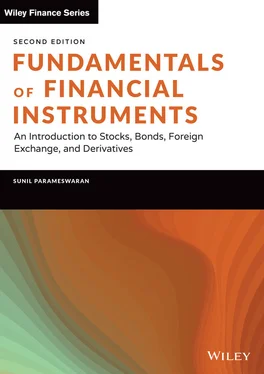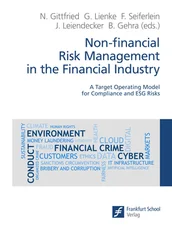Many countries have deregulated their money and capital markets substantially. The developed and some of the developing countries allow foreign brokerage firms to operate in their domestic stock exchanges to facilitate greater competition. The majority of countries have eliminated the structure of fixed brokerage commissions which used to exist. Commissions are now largely negotiable between the brokers and the clients and very often are a function of the trading volume and the quality of service that is sought. Interest rate ceilings have been largely removed, and offshore banking facilities (international banking facilities, or IBFs, in the United States) are available.
IBFs allow US banks to use domestic branches to service foreign customers with international transactions, both deposit and loan services, free of reserve requirements and interest rate regulations. Other countries have followed suit. The objective was obviously to make US banks competitive with respect to players outside the United States who were accepting deposits denominated in dollars and making loans in dollars.
Many countries have also sought to do away with the distinction between Commercial Banking and Investment Banking, and thus move toward Universal Banking. Most major banks these days are giant financial conglomerates that serve as one-stop financial solutions providers.
EXAMPLE 1.6
(An Illustration from India)
Take, for instance, the case of ICICI Bank, which is India's second largest bank. It is a traditional commercial bank on the one hand, in the sense that it accepts deposits from the public and makes loans. It has, however, an Asset Management Company that manages mutual funds in collaboration with Prudential Plc. ICICI Prudential is into Life Insurance. ICICI Lombard is into General Insurance. ICICI Home Finance is a subsidiary that makes real estate loans.
Constant product and process innovations are a major feature of the modern financial market. Innovations have manifested themselves in two forms: (1) many new products have been created and (2) new methods have been devised to facilitate the transfer of risks.
Of course, none of the observed advances in global markets would have been feasible without the developments in telecommunications, computer hardware, and software that we have witnessed in the recent past. They have helped develop systems where links can be instantly established, and funds and securities can be transferred safely and quickly. Companies like Bloomberg now provide round-the-clock access to prices and news from financial centers round the world. Most exchanges are now fully automated and electronic.
Today's markets are also characterized by the increasing sophistication of investors and borrowers. Multinational corporations and, surprisingly, even governments have become more sophisticated. Corporate treasurers, fund managers, and bureaucrats are highly educated and aware. Today's markets also tend to be largely dominated by institutions. These giants can take advantage of economies of scale worldwide. They can also afford to employ large teams of highly qualified experts.
1 1See Rose (2000).
2 2Obviously, the price of good A in terms of good B is the reciprocal of the price of good B in terms of good A.
3 3See Geddes, 2001.
CHAPTER 2 Mathematics of Finance
INTEREST RATES
Interest on money borrowed and lent is a feature of our daily lives. Most people have paid and received interest at some point in time. It is a common practice to make investments by buying bonds and debentures, and opening checking, savings, and time deposits with institutions like commercial banks. Bonds and debentures pay interest on their face value or principal. We refer to this as the coupon. Banks, while they do not pay interest on checking accounts, pay interest on savings and time deposits.
In today's consumer-driven economy, it is also a common practice to buy products and services on loan. Borrowing to buy residential property, which is referred to as a mortgage loan, is a major component of the debt taken by individuals and families. People also borrow to fund their academic pursuits in the form of student loans. Retail borrowing to finance various purchases such as automobiles and consumer durables (white goods) is a feature of today's society.
Interest may be construed as the compensation that a lender of capital receives. Why should a lender charge for making a loan? In other words, why not give an interest-free loan? It must be remembered that if you part with your money in order to extend a loan, then you are deprived of an opportunity to use the funds while they are on loan. The interest that you charge is consequently a compensation for this lost opportunity. In economic parlance we would term this as rent. Capital like land and labor are factors of production, and consequently those who seek to use the resources of others must pay a suitable compensation. To give an analogy, take the case of a family that gives its house or apartment to a tenant. It would obviously require the tenant to pay a monthly rent, because as long as he is occupying the property, the owners are deprived of an opportunity to use it themselves. The same principle is applicable in the event of a loan of funds. The difference is that the compensation in the case of property is termed as rent , whereas when it comes to capital, we term it as interest . In the language of economics, both constitute rent, albeit for different resources.
THE REAL RATE OF INTEREST
The price of a factor of production may be set or regulated by the government or may be left to be determined by market forces. In a free market, interest rates on loans are determined by the demand for capital and its supply. One of the key determinants of interest is what is termed as the real rate of interest.
What exactly is the real rate? The real rate may be defined as the rate of interest that would prevail on a riskless investment, in the absence of inflation. What is a riskless investment in practice? A loan to a central or federal government of a country may be termed as riskless, for these institutions are empowered to levy taxes and print money. As a consequence, there is no risk of nonpayment. In the United States, securities such as Treasury bonds, bills, and notes, which are backed by the full faith and credit of the federal government, may therefore be construed as riskless from the standpoint of nonpayment.
Even these Treasury securities, however, are not devoid of risk from the point of view of protection against inflation. What exactly is inflation? Inflation refers to the change in the purchasing power of money, or the change in the price level. Usually inflation is positive, which means that the purchasing power of money will be constantly eroding. There could be less common situations where inflation is negative, a phenomenon that is termed as deflation. In such a situation, the value of a dollar, in terms of the ability to acquire goods and services, will actually increase. We will illustrate our arguments with the help of an example.
Take the case of an investment in a Treasury security with a face value of $1,000. Assume that it will pay $100 by way of interest every year. When the security is acquired, the price of a box of chocolates is $10, and we will assume that the price remains the same until the end of the year. Consequently, the investor can expect to buy 10 boxes after a year when he receives the interest.
In this example, the rate of interest in terms of dollars is 10% per annum, since an investment of $1,000 yields a cash flow of $100. In terms of goods, which in this case is chocolates, our return is also 10%, for the principal corresponds to an investment in 100 boxes of chocolates and the interest received in dollars facilitates the acquisition of another 10 boxes. The rate of interest as measured by our ability to buy goods and services is termed as the real rate of interest.
Читать дальше












